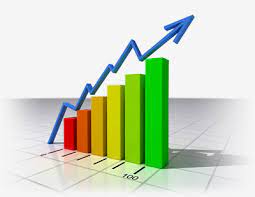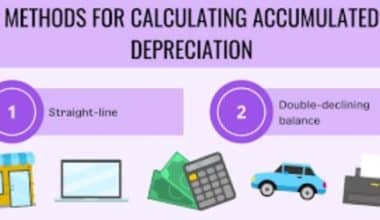When a company produces a lot of the same product, the process costing accounting system is often utilized. In the oil and processed food industries, for example, process costing is used to estimate the cost of producing millions of similar snack packages. In this article, you’ll find out more about process vs. job costing, which is used to calculate product costs.
What is Process Costing?
Process costing is a system used when there is a large production of comparable products and the costs associated with individual units of output cannot be distinguished from one another. To put it another way, each product’s cost is presumed to be the same as every other product’s cost. Costs are accumulated over a set period of time, summarized, and then uniformly allocated to all units produced during that period.
For example, in many sectors, the sole method for figuring out product prices is to use process costing. The chart of accounts doesn’t need reorganization in a big way because it uses many of the same journal entries as a job does without costing the environment. A process vs. job costing system can be applied to combine the best parts of both.
An Example of Process Cost Accounting
For example, ABC International, for process costing, generates purple widgets that need processing through numerous production divisions. The casting department is the first step in the process and the production of the widgets. The casting section spends $50,000 on direct material expenses and $120,000 on conversion charges in March (comprised of direct labor and factory overhead). During March, the department processes 10,000 widgets, so the per-unit cost of the widgets passing through the casting department during that time is $5.00 for direct materials and $12.00 for conversion charges. After this, the widgets are supplied to the trimming department so that they can undergo additional processing, at which time per-unit fees are assessed.
Another example of process costing is that there is an assumption here that the manufacturing of the same product by the same company in significant quantities at the same time. The processing of products takes place across a number of departments. Costs for the first segment in June: $150,000 in direct materials. For the conversion, the price is $225,000. In June, processing 100,000 units will cost $3.00 in direct materials and conversion fees.
Types of Process Costing
The following are the three types of process costing for selecting the best approach for your business.
#1. Weighted Average Costs:
This is the most straightforward method of cost calculation. Companies sum all expenditures for the current period and divide them by the total number of units finished and transferred out, in addition to the corresponding number of units of work-in-progress at the conclusion of the period.
#2. Standard Costs:
This strategy substitutes actual costs with an anticipated standard cost for each process stage. When it is too difficult or time-consuming for a company to acquire current information regarding its true expenses, it often employs this strategy. It might also be advantageous for organizations that produce a large variety of products and find it difficult to assign specific costs to each item.
#3. First in, First-out (FIFO)
FIFO is the most difficult method for calculating a product’s cost when costs vary greatly from period to period. First-in, first-out (FIFO) means the first units received (work in progress at the start of the period) will be finished first. When calculating current period costs, work-in-progress expenditures from the prior period are not included.
The Importance of Using a Process Costing
A process costing system helps corporations and production managers track product costs in industries that generate huge quantities of goods and experience price changes owing to processes and many production lines. Process costing generates a cost of goods produced (COGM) figure for your company’s income statement.
Specifically, process costing is essential since it assists businesses. controls inventory counts and is capable of accurate distribution. Monitor the profit to know precisely the expenses and the income. Report the data from each department consistently and accurately.
Using the Process Cost Method
The process costing system has five steps that are applicable to allocating appropriate costs to inventory at the beginning, and at the conclusion of an accounting or production period.
#1. Analyze the Inventory
The first stage in computing process costs is analyzing the inventory by evaluating its cost flow. A company can determine the number of inventory accounts at the beginning of the accounting period. The amount of inventory that was completed during the accounting period and the amount of inventory that was still in process at the end of the accounting period were determined by determining the costs of each production process.
#2. Convert Inventory Costs
The second stage in determining process costing is to convert any inventory that is in process at the conclusion of the period to an equivalent number of units.
#3. Calculate Applicable Costs.
Then, after converting any inventory to its equivalent in produced units, compute the entire costs incurred during the production process, both indirect and direct. Then divide the quantity between the complete inventory and processing inventory. Direct and indirect costs of production both comprise the initial investment in products as well as the ongoing expenditures incurred over time.
#4. Calculate The Cost Per unit.
Calculate the expenses per unit once you’ve estimated all of the costs connected with the manufacturing process for both finished and in-process inventories. At the end of the accounting period, this includes the costs of completed units and equivalents of finished units. A printer cartridge maker, for example, would split its process cost by 4,000 if it produced 3,000 cartridges and left 2,000 unfinished.
#5. Cost of Full and Partial Items
At the end of each period, divide expenses according to the number of work products and inventory that was still in process.
When Is a Process Costing System Suitable?
The process costing system is suitable for businesses that make products in batches. Every production step is identical. These businesses can estimate input and output losses faster. There is a charge for unusual expenses to the P&L instead of a procedure. This process is applicable in industries such as cement, soaps, steel, paper, chemicals, medications, vegetable oils, rubber, and so on.
Features of Process Costing
Each of these divisions represents a stage in the manufacturing process. As a result, we begin by defining the cost centers.
- The factory assigns and accumulates direct and indirect expenses for each step.
- A process’s output is applicable as an input in another process.
- It’s impossible to tell the difference between batches unless batch coding is applicable.
- With the exception of the scheduled maintenance downtime, the manufacturing process is always on.
- Each phase of the production process receives its fair share of the costs.
Terminologies Under Process Cost
- Normal loss.
- Abnormal loss.
- Abnormal gain.
- Scrap.
- Waste.
- Defective units.
- Spoilage.
Process Costing vs. Job Costing
Because process vs. job costing is applicable in different industries, you can’t actually compare them. Although the approaches differ, the fundamental difference is that job costing requires more oversight, whereas process costing does not.
There are times when a corporation may have both. For example, a corporation may make a large number of things but alter or personalize them before distributing them to a client or clients. In this situation, both costing elements are applicable.
Furthermore, job costing and vs process costing are good examples of cost accounting systems that assist firms to keep track of all the costs that relate to producing a product or providing a service.
Job Costing vs Process Costing: Key Differences
- Production: The cost of production is personal in the pricing of individual tasks but uniform in the cost of the entire production process.
- Assignment: In job costing, it is the process of estimating the cost of each job. Process costing determines the cost first by the process and then by the number of units produced.
- Cost Reduction: There are fewer avenues for cost reduction with task costing than with process costing.
- Cost Transfer: you can’t transfer costs in job cost, but it’s possible to transfer them from one process to another in process cost.
- Individuality: Because all occupations are unique, all items have unique job costs. Because process costs necessitate mass production, items lack originality.
- Industry: Job costing works effectively in businesses where products or services are
- inclined to meet the needs of customers. Process costing works best in mass manufacturing businesses with standardized products.
- You can’t separate losses in job costing, but you can in process costing.
- Work in Progress: With job costing, there may or may not be any work in progress (WIP). With process cost, there is always WIP at the beginning and end of a period.
- Job Costing: Job costing is excellent for small production units, while process costs are best for large production units.
- Record Keeping: While keeping records for task pricing is arduous and time-consuming, process costs keep things streamlined and efficient.
.
Process Costing: Pros and Cons
Process costing is the most practical and efficient accounting method for some manufacturers. This strategy has pros and cons. Work-in-progress costs might be hard to estimate. Pros and cons:
Pros
Process costing is easier than other costing approaches. it can help firms decrease costs.
- Ease of use: Cost accounting systems like job costing, which require recording the costs of each item and component part as well as managing salary, other material costs, and overhead, are more cumbersome for organizations that produce a large number of comparable products.
- Flexibility: Process costing can assist organizations in improving their processes in order to minimize expenses, allowing them to sell their products at lower prices. It helps to pinpoint wasteful or duplicate manufacturing processes by highlighting the total cost of each stage.
- Standardized: With each period, corporations use the same standardized costing method, allowing them to compare variations in costs over time. As a result, businesses are better able to keep costs in check and spot potential problems.
Cons
The following example shows the drawbacks of process costing.
- Errors: Process costing determines the cost of each unit based on the overall expenses of the departments or stages involved in manufacturing.
- Calculation difficulties: Process costing calculates equivalent units by allocating costs to unfinished commodities at the start or conclusion of a period. Balance sheets include work in progress. If raw material prices fluctuate, so may the cost of finishing goods. Companies with inaccurate WIP expenses will have inaccurate product costs.
- Time-consuming: Calculating comparable units can take some time. Management accountants must evaluate where these unfinished goods are in the manufacturing process and assign expenses accordingly.
What is the significance of process costing?
Process costing is a crucial tool used by businesses and production managers to monitor product prices in sectors dealing with large quantities of manufactured items that are prone to frequent price variations because of the manufacturing process and many production lines.
What are the different types of processes that cost?
Process costing can be broken down into three categories: weighted average costs, standard costs, and first-in, first-out (FIFO). Since process costing’s fundamental tenet is that the first unit produced is also the first unit utilized, there is no last-in, last-out (LIFO) technique.
What is process costing also known as?
Process costing is employed in this case. Typically, a finished product from one process serves as the starting point for the next, and the ultimate product is produced in the last process. This is sometimes referred to as “continuous costing” because the products are made using a continuous process.
What increases the cost of production?
Short-term output growth will result in an increase in a company’s overall variable costs. A company’s variable expenses will increase as it produces more products, which it must additionally package. This is due to the company’s increasing need for packaging to accommodate the higher production volume.
What reduces the cost of quality?
How can the price of quality be lowered? Through preventative measures, improved employee training, and the use of quality management software that streamlines your quality workflow, you can lower the cost of quality.
FAQs
What are the principles of process costing?
The main principles of process costing are
Cost of materials, wages, and overhead expenses are collected for each process.
Who uses process costing?
A process costing system is used by companies to make similar or identical units of products in batches. Companies that make one-of-a-kind goods or do one-of-a-kind jobs use a job costing system.
What companies use job costing and process costing?
The companies that use job costing systems are retail companies, law firms, accounting businesses, medical services, and construction companies.






